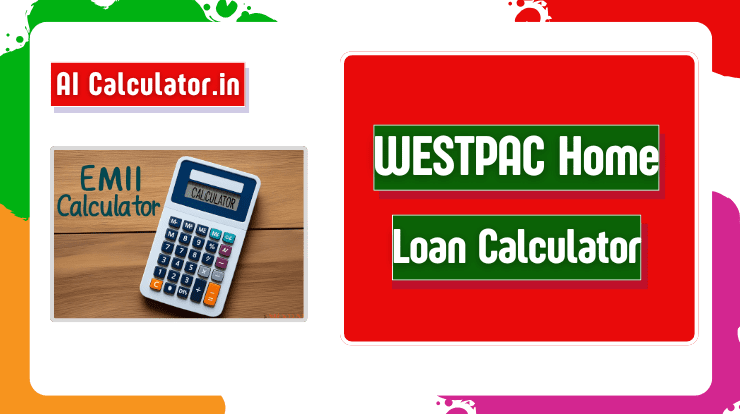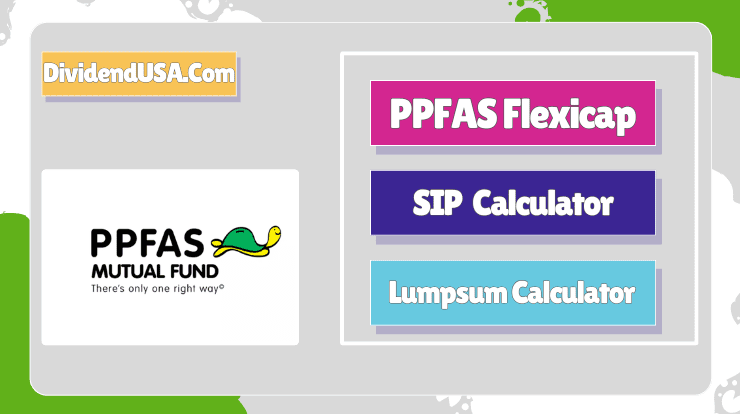Join WhatsApp Group
Join NowTexas SNAP Benefits Calculator
Estimate Texas SNAP (food stamp) eligibility and a rough monthly benefit amount. This is an estimate only.
Household Information
Results
Visual Breakdown
Shows how gross income is reduced by deductions to calculate net income.
Your 30% contribution vs SNAP benefit amount.
Each step lights up as it's completed in the calculation process.
Texas SNAP Benefits – Everything You Need to Know
Texas SNAP (Supplemental Nutrition Assistance Program) provides monthly food assistance to low-income residents through the Lone Star Card, an electronic benefit card that works like a debit card at approved stores. Eligibility depends on household size, income, and work status, with most households needing a gross income below 130% of the federal poverty level. Benefits can purchase groceries like fruits, vegetables, meat, dairy, bread, and seeds for growing food, but cannot buy alcohol, tobacco, hot prepared meals, or non-food items. Starting April 2026, Texas will ban the purchase of candy and sugar-sweetened beverages with SNAP funds, making it the first state to restrict these items. This change aims to promote healthier eating habits among program participants.
Table of Contents
Millions of Texans rely on food assistance each month to put meals on the table. The Supplemental Nutrition Assistance Program—commonly known as SNAP or food stamps—serves as a critical safety net for families, seniors, and individuals facing financial hardship. In Texas alone, over 3.5 million people receive SNAP benefits, making it one of the largest nutrition programs in the state.
Understanding how Texas SNAP benefits work, who qualifies, and how to apply can make a real difference for households struggling with food insecurity. This guide covers everything from eligibility requirements to upcoming policy changes that will affect what recipients can purchase.
What is Texas SNAP?
Texas SNAP is a federally funded program administered by the Texas Health and Human Services Commission (HHSC). The program provides monthly financial assistance specifically for purchasing food and groceries. Unlike traditional welfare, SNAP focuses exclusively on nutrition—helping families afford healthy meals while freeing up their limited cash for other essential expenses like rent and utilities.
The Lone Star Card
When approved for SNAP in Texas, recipients receive a Lone Star Card—a plastic card that looks and functions like a debit card. Each month, benefits are automatically loaded onto this card. You can use it at grocery stores, farmers’ markets, and any retailer that accepts EBT (Electronic Benefit Transfer).
The card protects your privacy since it doesn’t indicate that you’re using government assistance. You simply swipe it at checkout like any payment card, enter your PIN, and the purchase amount is deducted from your monthly balance.
Eligibility for Texas SNAP
Not everyone qualifies for SNAP benefits in Texas. The program targets households with limited income and resources. Here’s what you need to know about SNAP eligibility in Texas:
Income Limits
Your household’s gross monthly income must typically fall at or below 130% of the federal poverty level. Net income (after deductions) should be at or below 100% of the poverty level.
2025 Texas SNAP Income Limits (Monthly Gross):
| Household Size | 130% FPL (Gross Limit) | 100% FPL (Net Limit) |
|---|---|---|
| 1 | $1,580 | $1,215 |
| 2 | $2,137 | $1,644 |
| 3 | $2,694 | $2,072 |
| 4 | $3,250 | $2,500 |
| 5 | $3,807 | $2,929 |
| 6 | $4,364 | $3,357 |
| 7 | $4,921 | $3,785 |
| 8 | $5,478 | $4,214 |
For each additional person, add $557 to the gross limit and $429 to the net limit.
Work Requirements
Most able-bodied adults between 18 and 52 without dependents must meet work requirements to receive SNAP benefits. This means you need to:
- Work at least 80 hours per month, OR
- Participate in a qualifying work or training program, OR
- Comply with job search requirements
Failure to meet these requirements can limit benefits to just three months within a three-year period.
Exemptions from Work Requirements
You’re automatically exempt from work requirements if you:
- Are under 18 or over 52 years old
- Are pregnant
- Have a disability or are physically/mentally unfit for work
- Care for a child under age 6
- Care for an incapacitated person
- Receive unemployment benefits
- Participate in drug or alcohol treatment programs
- Live in a household receiving TSAP (Temporary State Assistance Program)
Asset Limits
Texas doesn’t impose strict asset limits for most SNAP applicants. However, if your household includes an elderly (60+) or disabled member, you may need to meet certain resource tests.
How to Apply for SNAP in Texas
Applying for SNAP in Texas is straightforward, with multiple options to fit your situation.
Online Application
The fastest way to apply for SNAP in Texas is through the YourTexasBenefits.com portal:
- Create an account at YourTexasBenefits.com
- Complete the online application (takes 20-30 minutes)
- Upload required documents through the portal
- Submit and wait for your interview appointment
Paper or In-Person Application
You can also:
- Download and mail a paper application from the HHSC website
- Visit your local Texas Health and Human Services office
- Call 2-1-1 to request an application by mail
Required Documents
When you apply, you’ll need to provide:
- Identity verification: Driver’s license, state ID, or birth certificate
- Income proof: Recent pay stubs, tax returns, or self-employment records
- Residence proof: Utility bill, lease agreement, or mortgage statement
- Social Security numbers for all household members (if available)
- Immigration status documents (if applicable)
Application Timeline
After submitting your application:
- You’ll receive a phone or in-person interview within 7-10 days
- A decision comes within 30 days for most applicants
- Expedited processing (within 7 days) is available for households with urgent needs
What Can You Buy with SNAP Benefits?
Understanding what you can and cannot purchase with your Lone Star Card helps you maximise your benefits.
Allowed Food Items
You can use SNAP benefits to buy:
- Fruits and vegetables (fresh, frozen, canned)
- Meat, poultry, and fish
- Dairy products (milk, cheese, yoghurt)
- Breads and cereals
- Snack foods and non-alcoholic beverages
- Seeds and plants that produce food for your household
What You Cannot Buy
SNAP benefits cannot purchase:
- Alcoholic beverages or tobacco products
- Hot foods prepared for immediate consumption
- Non-food items (soap, paper products, pet food, cleaning supplies)
- Vitamins and supplements
- Live animals (except shellfish, fish from tanks, and live animals for food)
- Prepared foods meant to be eaten in-store
- Any food sold for on-premises consumption
Restaurant Meals Program Exception
Some elderly, disabled, or homeless SNAP recipients may qualify for the Restaurant Meals Program (RMP), which allows purchasing hot, prepared meals at approved restaurants. However, this program has limited availability in Texas.
How Much Can You Get?
SNAP benefit amounts vary based on your household size, income, and allowable deductions. Texas uses a formula that considers:
- Household size
- Gross and net income
- Standard deductions
- Shelter costs
- Dependent care expenses
- Medical expenses (for elderly/disabled members)
Maximum Monthly Benefit Amounts (2025)
| Household Size | Maximum Monthly Benefit |
|---|---|
| 1 | $291 |
| 2 | $535 |
| 3 | $766 |
| 4 | $973 |
| 5 | $1,155 |
| 6 | $1,386 |
| 7 | $1,532 |
| 8 | $1,751 |
Each additional person adds $219 to the maximum benefit.
Average Benefits in Texas
Most Texas households don’t receive the maximum amount. The average monthly SNAP benefit in Texas is approximately $180 per person, though this varies widely based on individual circumstances.
Your actual benefit equals the maximum allotment for your household size minus 30% of your net income. This calculation ensures households with some income still receive assistance while contributing what they can afford toward food costs.
Upcoming Changes in Texas SNAP
Texas SNAP benefits are evolving, with significant policy changes on the horizon.
2026 Ban on Candy and Sugary Drinks
Starting in April 2026, Texas will become the first state to prohibit SNAP recipients from purchasing candy and sugar-sweetened beverages with their benefits. This groundbreaking policy aims to combat obesity and improve nutritional outcomes for low-income families.
What will be restricted:
- Candy and confections
- Soft drinks with added sugar
- Energy drinks with added sweeteners
- Sweetened teas and flavoured drinks
What remains allowed:
- 100% fruit juice
- Diet sodas
- Unsweetened beverages
- Natural sugars in whole foods
Health advocates support the measure as a step toward healthier eating, while critics argue it limits personal choice and may stigmatise SNAP recipients.
Double Up Food Bucks Program
Texas continues expanding the Double Up Food Bucks program at farmers’ markets statewide. When you use SNAP benefits to buy fresh fruits and vegetables at participating markets, you receive matching funds (up to $20 per day) to purchase more produce.
This initiative:
- Stretches your food budget further
- Supports local farmers
- Encourages consumption of fresh, healthy foods
- Connects low-income families with community resources
Check with your local farmers’ market to see if they participate in this program.
Tips for Making the Most of SNAP
Maximising your Texas SNAP benefits requires smart shopping strategies and knowing available resources.
Shop at Farmers’ Markets
Many Texas farmers’ markets accept the Lone Star Card and offer the Double Up Food Bucks program. You’ll get fresher produce, support local agriculture, and potentially double your purchasing power for fruits and vegetables.
Plan Your Meals
Before shopping:
- Create a weekly meal plan
- Make a detailed shopping list
- Check store ads for sales
- Use coupons (even with SNAP)
- Avoid impulse purchases
Planning helps you stretch benefits throughout the month instead of running short before the next deposit.
Buy in Bulk When Possible
Purchase larger quantities of non-perishable staples like:
- Rice and pasta
- Dried beans and lentils
- Canned goods
- Frozen vegetables (often cheaper than fresh)
- Whole-grain products
Bulk buying reduces per-unit costs and ensures you have pantry staples available.
Compare Unit Prices
Look at the unit price (cost per ounce or pound) on shelf tags rather than just the package price. Store brands often offer the same quality as name brands at lower prices.
Explore TSAP if Eligible
If you have children and qualify for the Temporary State Assistance Program (TSAP) in addition to SNAP, you may receive both cash assistance and food benefits. TSAP helps cover other essential needs beyond food.
Use Food Banks as Supplements
SNAP benefits sometimes run short before month’s end. Local food banks and pantries provide free groceries to supplement your assistance. There’s no shame in using multiple resources to feed your family.
Cook at Home
Preparing meals from scratch stretches your benefits much further than buying convenience foods or prepared items. Simple cooking skills can transform basic ingredients into nutritious, filling meals.
Final Thoughts
Texas SNAP benefits provide essential food assistance to millions of residents facing economic challenges. Whether you’re temporarily between jobs, supporting a family on a limited income, or managing a disability, SNAP can help bridge the gap between your resources and your nutritional needs.
The program offers more than just financial assistance—it represents an investment in health, stability, and opportunity for Texas families. With upcoming changes like the 2026 restrictions on sugary items and expanding programs like Double Up Food Bucks, Texas continues to adapt SNAP to promote both food security and better health outcomes.
If you believe you might qualify for SNAP benefits, don’t hesitate to apply. The application process is confidential, and the support could make a meaningful difference in your household’s wellbeing. Visit YourTexasBenefits.com or call 2-1-1 to learn more about your eligibility and start your application today.
Remember: accessing SNAP benefits isn’t something to feel embarrassed about—it’s a right you’ve earned as a Texas resident, and it exists specifically to help you during challenging times.



